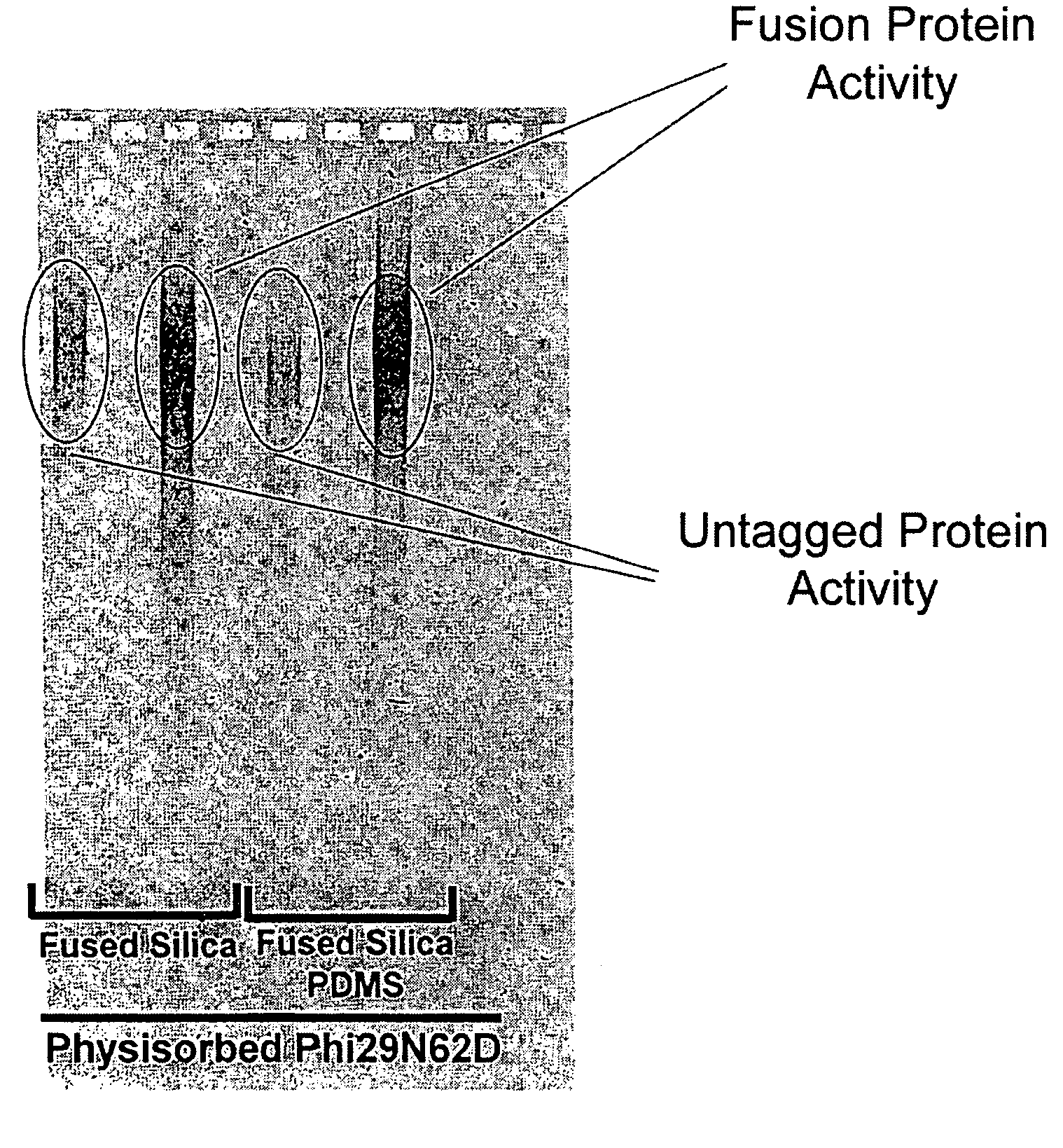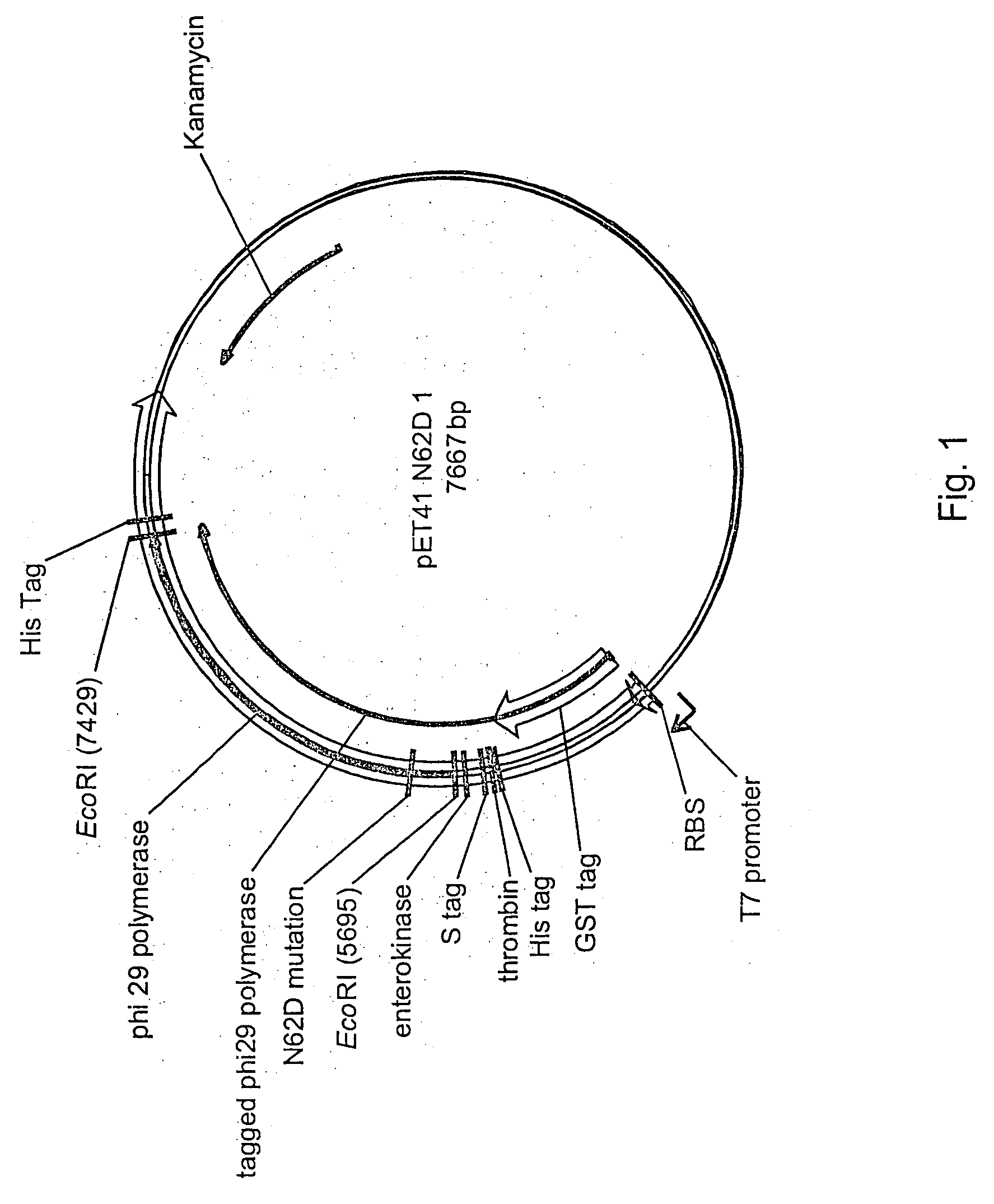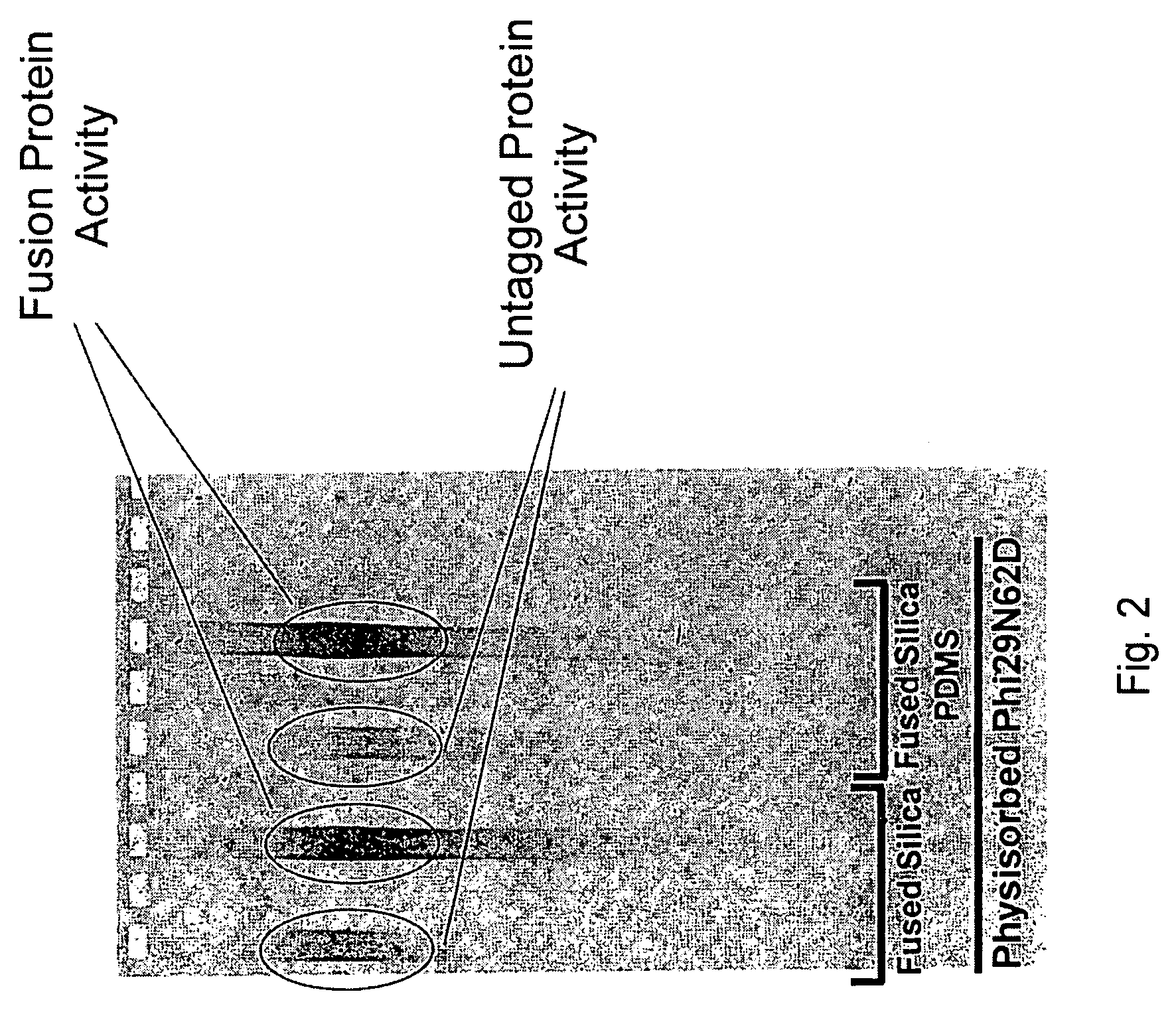Active surface coupled polymerases
a polymerase and active surface technology, applied in the field of active surface coupled polymerases, can solve the problems of rna pols not being easily used for dna amplification, snp detection or the like, and the immobilization of the surface has been shown to disrupt the activity of dna polymerase, so as to reduce the effect of surface denaturation, increase the binding affinity of the polymerase, and reduce the loss of activity
- Summary
- Abstract
- Description
- Claims
- Application Information
AI Technical Summary
Benefits of technology
Problems solved by technology
Method used
Image
Examples
example 1
Recombinant Polymerases
[0109]A vector for expression of a recombinant Phi 29 polymerase with three surface coupling domains was constructed and is schematically illustrated in FIG. 1. An N62D mutation was introduced into wild-type Phi 29 (SEQ ID NO: 1) to reduce exonuclease activity, and GST (glutathione-S-transferase), His, and S tags were added as surface coupling domains. The resulting tagged N62D Phi 29 amino acid sequence is presented as SEQ ID NO:3. The sequence of the vector is presented as SEQ ID NO:8. The tagged N62D Phi 29 polymerase is encoded by nucleotides 4839-7428 of the vector sequence, with the polymerase at nucleotides 5700-7428 and the N62D mutation at nucleotides 5883-5885. The GST, His, and S tag surface coupling domains are encoded by nucleotides 4838-5699. Other features of the vector include the ribosome binding site (nucleotides 4822-4829), T7 promoter (nucleotides 4746-4758), and kanamycin resistance marker (complement of nucleotides 563-1375).
[0110]Additio...
PUM
| Property | Measurement | Unit |
|---|---|---|
| temperatures | aaaaa | aaaaa |
| temperatures | aaaaa | aaaaa |
| temperatures | aaaaa | aaaaa |
Abstract
Description
Claims
Application Information
 Login to View More
Login to View More - R&D
- Intellectual Property
- Life Sciences
- Materials
- Tech Scout
- Unparalleled Data Quality
- Higher Quality Content
- 60% Fewer Hallucinations
Browse by: Latest US Patents, China's latest patents, Technical Efficacy Thesaurus, Application Domain, Technology Topic, Popular Technical Reports.
© 2025 PatSnap. All rights reserved.Legal|Privacy policy|Modern Slavery Act Transparency Statement|Sitemap|About US| Contact US: help@patsnap.com



